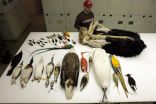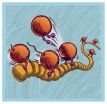(Press-News.org) LOS ANGELES, Dec. 11, 2014-- It's possible to lastingly persuade conservative voters to support a controversial issue like marriage for same-sex couples--and at a greatly accelerated rate compared to their neighbors--according to groundbreaking data published in this week's issue of the peer-reviewed journal Science. The 12-month study also shows how the Los Angeles LGBT Center's voter persuasion methods reduced anti-gay prejudice and may have the potential to reduce other forms of prejudice.
The independent researchers who led the study, prominent Columbia University Professor and political scientist Donald P. Green and Michael J. LaCour of UCLA, found that the Center's LGBT canvassers changed the minds of conservative voters to support marriage for same-sex couples five times faster than their neighbors were evolving on the issue. More than that, the doorstep conversations had a long-lasting, measurable impact on reducing the voters' prejudice against LGBT people and had a "spillover effect," changing the minds of others in the same household.
"I've been studying the impact of voter treatments for 20 years and co-authored a paper that examined 900 treatments to reduce prejudice," said Green, "and the honest truth is that few of them, including TV ads, door-to-door canvassing, mail, and phone calls, have much effect. Careful scientific measurement shows that the few attempts at voter persuasion that do have an impact decay in three to five days. That's why we were so surprised by the data from this study. It turns out that the Los Angeles LGBT Center has discovered a new approach that has a bigger, longer-lasting impact than anything we've seen before."
Over five years, the Center's Vote for Equality staff and volunteers had more than 12,000 one-on-one conversations in Los Angeles neighborhoods that overwhelmingly supported Proposition 8, the California ballot measure that repealed the freedom for same-sex couples to marry. The approach studied by the researchers was developed through continuous, iterative learning, resulting from the work of more than 1,000 volunteers and 18 staff who talked with and videotaped conversations with voters; studied the footage; developed new messages and approaches; and adapted training programs accordingly.
To measure the Center's impact, LaCour and Green applied the same techniques used to evaluate the efficacy of medical treatments. Voters were randomly assigned to a control group, placebo group, or treatment group and surveyed at regular intervals. Volunteer canvassers talked about the value of recycling with voters who were in the placebo group; those in the control group weren't canvassed at all.
During the 12-month study (June 2013 - May 2014), voters in the placebo and control group experienced a 3-point reduction (on a 100-point "feeling thermometer") in prejudice against lesbian and gay people. Among voters who were canvassed about marriage by the Center's LGBT volunteers, the change was much greater: they had a 15-point reduction in prejudice. Just as important, the new, lower levels of prejudice persisted without decay throughout the year-long study.
"The data show that in 20 minutes, the Los Angeles LGBT Center's volunteer canvassers accomplished what would have otherwise taken five years at the current rate of social change," said Dave Fleischer, director of the Center's Vote for Equality and Leadership LAB programs. "How did we do it? Our team had heartfelt, reciprocal and vulnerable conversations on the doorsteps of those who opposed marriage for same-sex couples, and volunteers who were LGBT came out during their conversations."
The research showed that non-LGBT canvassers were initially just as effective as LGBT canvassers at changing minds on the issue of marriage, but the effect of their conversations rapidly decayed. After about 12 days, the data show they were only about half as effective as LGBT canvassers in reducing prejudice against gay and lesbian people.
"We're optimistic that our approach can be adapted to persuade voters on other issues," said Fleischer. "We're currently canvassing to reduce prejudice against transgender people and, with funding from Planned Parenthood, to increase support for abortion and reduce the stigma against those who have one. The research data from those projects is preliminary, but very encouraging."
INFORMATION:
About the Los Angeles LGBT Center
Since 1969 the Los Angeles LGBT Center has cared for, championed and celebrated LGBT individuals and families in Los Angeles and beyond. Today the Center's more than 450 employees and 3,000 volunteers provide services for more LGBT people than any other organization in the world, offering programs, services and global advocacy that span four broad categories: Health, Social Services and Housing, Culture and Education, Leadership and Advocacy. We are an unstoppable force in the fight against bigotry and the struggle to build a better world; a world in which LGBT people can be healthy, equal and complete members of society. Learn more at lalgbtcenter.org.
This news release is available in Danish and also Chinese on EurekAlert! Chinese.
An international effort to sequence the genomes of 45 avian species has yielded the most reliable tree of life for birds to date. This new avian family tree helps to clarify how modern birds--the most species-rich class of four-limbed vertebrates on the planet--emerged rapidly from a mass extinction event that wiped out all of the dinosaurs approximately 66 million years ago.
It reveals how some of the earliest bird species diverged, answering many long-standing questions about the common ...
SALT LAKE CITY, Dec. 11, 2014 - University of Utah researchers ran biochemical analysis and computer simulations of a livestock virus to discover a likely and exotic mechanism to explain the replication of related viruses such as Ebola, measles and rabies. The mechanism may be a possible target for new treatments within a decade.
"This is fundamental science. It creates new targets for potential antiviral drugs in the next five to 10 years, but unfortunately would not have an impact on the current Ebola epidemic" in West Africa, says Saveez Saffarian, senior author of ...
(SALT LAKE CITY) - Examination of DNA from 21 primate species - from squirrel monkeys to humans - exposes an evolutionary war against infectious bacteria over iron that circulates in the host's bloodstream. Supported by experimental evidence, these findings, published in Science on Dec. 12, demonstrate the vital importance of an increasingly appreciated defensive strategy called nutritional immunity.
"We've known about nutritional immunity for 40 years," says Matthew Barber, Ph.D., first author and postdoctoral fellow in human genetics at the University of Utah. "What ...
How birds evolved to have characteristics including feathers, flight and song is revealed with new clarity in a major study of their family tree.
The international study charts a burst of evolution that took place after the mass extinction of dinosaurs, 66 million years ago. This step-change gave rise to nearly all of the species of birds that we see on the planet today - more than 10,000 varieties.
The four-year project - which included researchers from the University of Edinburgh's Roslin Institute - decoded and compared the entire genetic fingerprint of 48 bird species. ...
Two penguin genomes have been sequenced and analyzed for the first time in the open access, open data journal GigaScience. Timely for the holiday season, the study reveals insights into how these birds have been able to adapt to the cold and hostile Antarctic environment.
Antarctic penguins are subject to extremely low temperatures, high winds, and profound changes in daylight. They have developed complicated biological systems to regulate temperature and store energy for long-term fasting. Most studies have focused on the physiological and behavioral aspects of their ...
DURHAM, N.C. -- His office is filled with all sorts of bird books, but Duke neuroscientist Erich Jarvis didn't become an expert on the avian family tree because of any particular interest in our feathered friends. Rather, it was his fascination with how the human brain understands and reproduces speech that brought him to the birds.
"We've known for many years that the singing behavior of birds is similar to speech in humans -- not identical, but similar -- and that the brain circuitry is similar, too," said Jarvis, an associate professor of neurobiology at the Duke ...
VIDEO:
A microscopy system continuously measures responses to signaling chemicals in thousands of cells at a time.
Click here for more information.
Scientists have discovered a general principle for how cells could accurately transmit chemical signals despite high levels of noise in the system, they report in Science this week.
A cell's response to outside chemical signals depends on its physiological state, which can fluctuate considerably. Amounts of different kinds ...
The entire semiconductor industry, not to mention Silicon Valley, is built on the propensity of electrons in silicon to get kicked out of their atomic shells and become free. These mobile electrons are routed and switched though transistors, carrying the digital information that characterizes our age.
An international team of physicists and chemists based at the University of California, Berkeley, has for the first time taken snapshots of this ephemeral event using attosecond pulses of soft x-ray light lasting only a few billionths of a billionth of a second.
While ...
CHAMPAIGN, Ill. - Where did the songbird get its song? What branch of the bird family tree is closer to the flamingo - the heron or the sparrow?
These questions seem simple, but are actually difficult for geneticists to answer. A new, sophisticated statistical technique developed by researchers at the University of Illinois and the University of Texas at Austin can help researchers construct more accurate species trees detailing the lineage of genes and the relationships between species.
The method, called statistical binning, was used in the Avian Phylogenetics Project, ...
This news release is available in Spanish. 66 million years ago, the dinosaurs, as we think about them, became extinct, but certain reptiles and birds survived this mass extinction. The birds that survived experienced rapid evolution and diversification. Until now, explaining the family tree of modern birds has been a difficult and controversial subject amongst scientists. Thanks to the research of an international consortium involving researchers from the Centre for Genomic Regulation in Barcelona, we now have new clues about this evolution and further information ...




